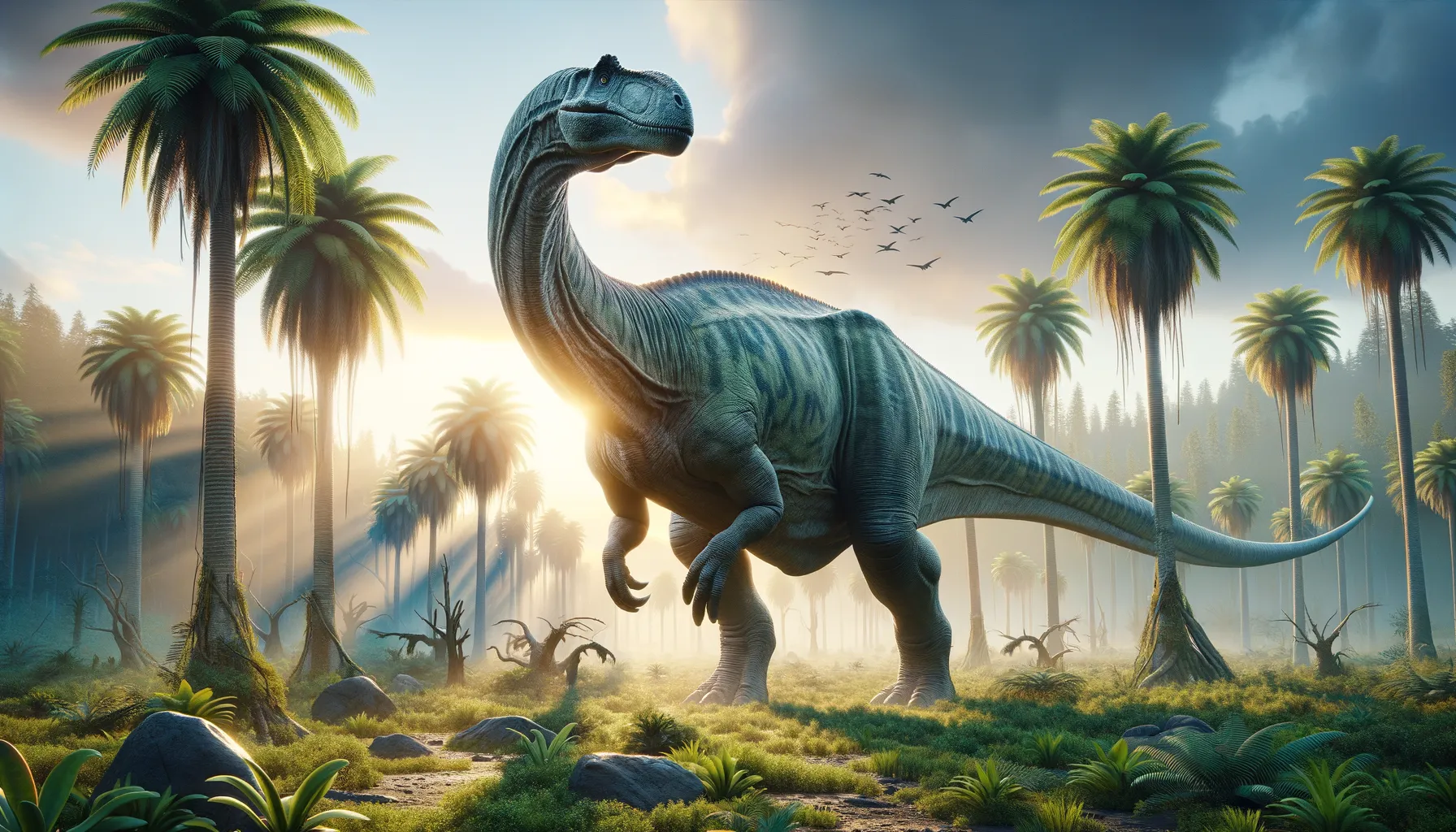
Andesaurus
A gentle giant of the ancient world.
Period
Cretaceous
Length
Up to 40 meters in length.
Height
Around 15 meters tall.
Weight
Approximately 70 tons.
Andesaurus was a gigantic sauropod dinosaur that roamed the lands of what is now South America during the Cretaceous period. Known for its impressive size, this herbivorous creature was among the largest dinosaurs to ever exist. Its name is derived from the Andes Mountains, near which its fossils were uncovered. As a sauropod, it had a long neck and tail, and a small head, perfectly adapted for grazing on tall vegetation.
Diet
Andesaurus was a herbivore, feeding primarily on vegetation. Its long neck allowed it to reach high into the trees to consume leaves, which was a significant part of its diet.
Hunting
As a herbivore, Andesaurus did not hunt. Instead, it foraged for plants and leaves, relying on the abundant vegetation of its environment.
Environmental challenges
Andesaurus faced environmental challenges such as changes in climate and vegetation patterns which could affect its food sources. Predation by large theropods posed a threat, especially to younger individuals. Additionally, competition for resources with other large herbivores might have been a significant challenge during its time.
Speed
Relatively slow due to its massive size.
Lifespan
Estimated to live several decades.
First discovery
Discovered in Argentina in 1987 by Jorge Calvo and Leonardo Salgado.
Fun Facts
- Andesaurus is named after the Andes Mountains, reflecting the location where its fossils were discovered.
- This dinosaur was a gigantic herbivore, known for its long neck and tail, typical of the sauropod family.
- Andesaurus lived during the early Cretaceous period, around 100 million years ago.
- Its remains were first unearthed in Argentina, a country known for its rich dinosaur fossil sites.
- The Andesaurus is believed to have been a peaceful plant-eater, munching on leaves high up in the trees.
- Estimates suggest Andesaurus could have reached lengths of up to 18 meters, making it one of the larger sauropods of its time.
Growth and Development
Like many sauropods, Andesaurus likely experienced rapid growth during its early years to reach its massive size. Its development involved a series of growth spurts that helped it achieve its gigantic proportions. Understanding its full growth cycle is difficult due to the limited fossil record.
Habitat
Andesaurus lived in lush floodplains with abundant vegetation, which provided ample food. This environment supported a diverse range of plant and animal life, facilitating a rich ecosystem. The prevalent humid conditions contributed to the thriving plant communities.
Interaction with other species
Andesaurus would have interacted with other species primarily through competition for food resources. The presence of predators would have posed a risk, potentially leading to defensive grouping behaviors among these large herbivores. Coexistence with other herbivores likely resulted in shared habitats with minimal direct conflict.
Natural lifespan
Andesaurus likely lived for several decades under natural conditions.
Reproduction
Reproduction in Andesaurus likely involved laying eggs in nests, possibly in communal nesting grounds. Young hatchlings would have been vulnerable to predators and relied on growing quickly to improve their survival chances.
Social behaviour
Andesaurus might have displayed herd behavior, congregating in groups for protection against predators. Such social structures could have facilitated the care and protection of young, ensuring their survival amidst various threats.
Fossil locations
The first fossils of Andesaurus were located in the Neuquén Province in Argentina. These discoveries give insight into the distribution and habitat of this sauropod in the ancient world.
